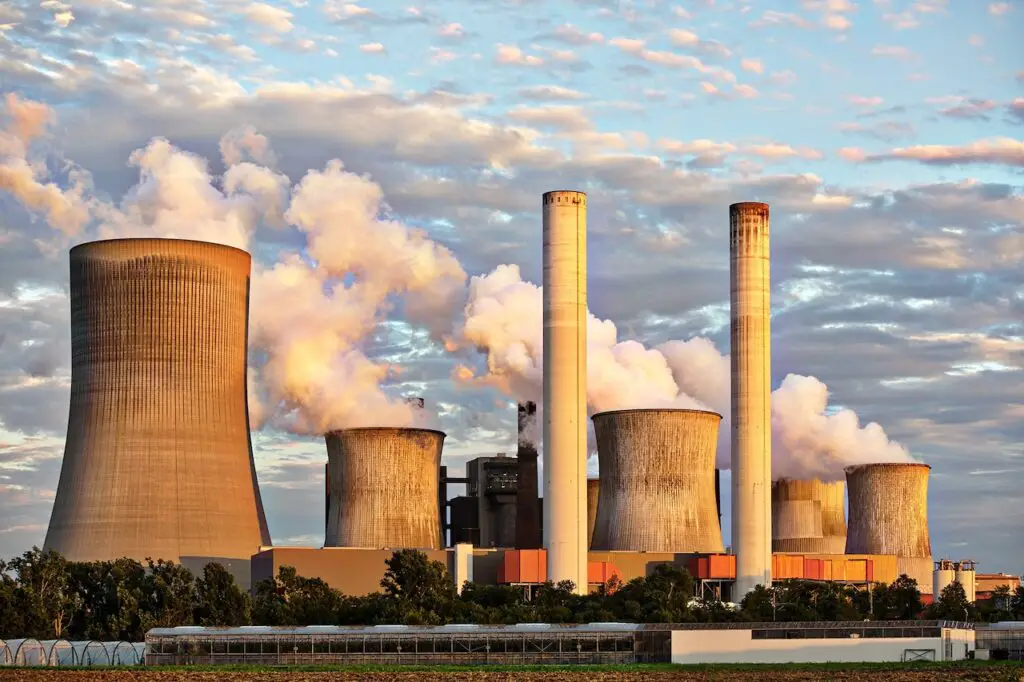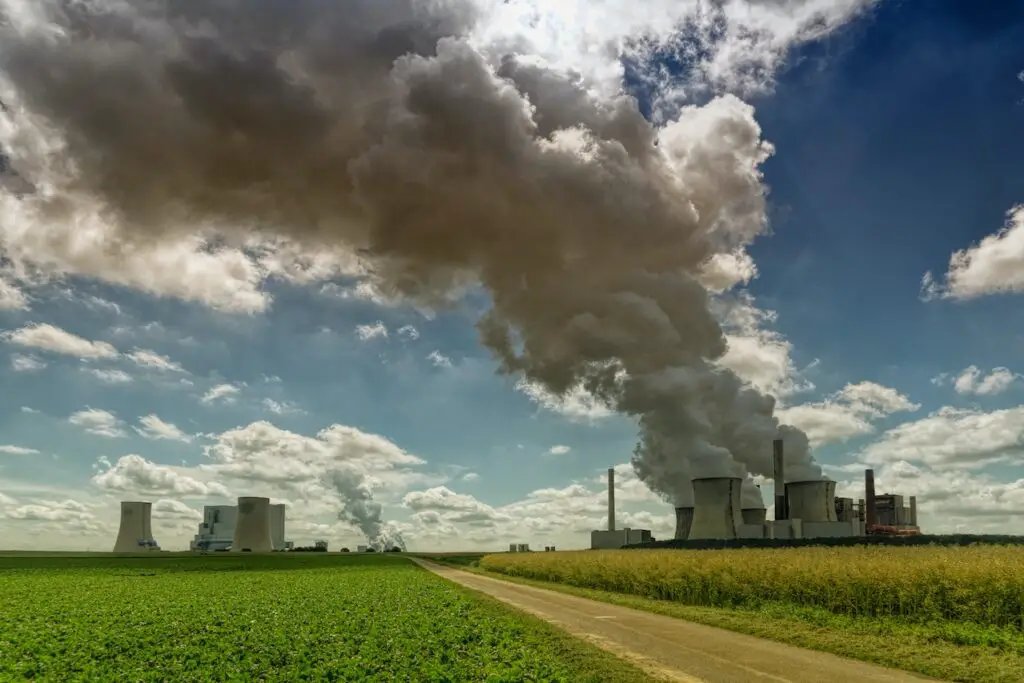What are carbon offsets and how can they help mitigate the effects of climate change? If you’ve ever asked yourself this question, you’re not alone. Carbon offsets are a way to invest in projects that reduce or remove greenhouse gas emissions from the atmosphere, and they are becoming an increasingly popular tool for companies and individuals looking to reduce their carbon footprint.
But how do carbon offsets work, and what are the benefits and criticisms of this approach? In this article, we’ll explore the world of carbon offsets and show you how they can help you contribute to a more sustainable future. So, are you ready to discover the power of carbon offsets? Keep reading to find out!

Explanation of what carbon offsets are
Carbon offsets are a way to mitigate the effects of carbon emissions by investing in projects that reduce or remove greenhouse gas emissions from the atmosphere.
The basic idea behind carbon offsets is that if an entity, such as a company or an individual, cannot reduce its own carbon emissions to zero, it can invest in projects that reduce or remove an equivalent amount of carbon from the atmosphere elsewhere.
This is done by purchasing carbon credits, which represent a reduction or removal of one metric ton of carbon dioxide (or an equivalent amount of other greenhouse gases).
Carbon offsets can fund a variety of projects that reduce or remove carbon emissions from the atmosphere. For example, a company that emits a certain amount of carbon dioxide can purchase carbon offsets to fund projects such as renewable energy, reforestation, or energy efficiency initiatives that reduce carbon emissions elsewhere.
In the case of renewable energy projects, the carbon offset funds can be used to build wind, solar, or hydroelectric power plants that generate clean energy and displace fossil fuel-based energy sources.
In the case of reforestation projects, the carbon offset funds can be used to plant trees, which absorb carbon dioxide from the atmosphere through photosynthesis.
Energy efficiency projects can include initiatives such as upgrading buildings to be more energy-efficient or implementing more efficient industrial processes.
One of the key benefits of carbon offsets is that they allow companies and individuals to take responsibility for their carbon emissions and take action to mitigate their impact on the environment. By investing in carbon offsets, companies and individuals can support projects that reduce or remove carbon emissions and contribute to a more sustainable future.
Additionally, carbon offsets can help companies and governments meet their sustainability goals or comply with regulations related to carbon emissions.
How Carbon Offsets Work
Carbon offsets work by allowing entities such as companies or individuals to invest in projects that reduce or remove greenhouse gas emissions from the atmosphere. The basic idea is that if an entity cannot reduce its own carbon emissions to zero, it can invest in carbon offsets to fund projects that reduce or remove an equivalent amount of carbon from the atmosphere elsewhere.
The process of purchasing carbon offsets typically involves the following steps:
- Determine the amount of carbon emissions that need to be offset: The first step in purchasing carbon offsets is to determine the amount of carbon emissions that need to be offset. This can be done by calculating the entity’s carbon footprint, which is the total amount of greenhouse gas emissions that are produced by the entity’s activities.
- Select a carbon offset provider: Once the amount of carbon emissions that need to be offset has been determined, the entity can select a carbon offset provider. There are many different providers of carbon offsets, each offering different types of offset projects.
- Choose a carbon offset project: The entity can then choose a carbon offset project to invest in. This can include projects such as renewable energy, reforestation, or energy efficiency initiatives.
- Purchase carbon credits: The entity can purchase carbon credits, which represent a reduction or removal of one metric ton of carbon dioxide (or an equivalent amount of other greenhouse gases). The cost of carbon credits can vary depending on the provider and the type of project being funded.
- Verification and certification: Once the carbon credits have been purchased, the project must be verified and certified to ensure that it is actually reducing or removing carbon emissions. Verification and certification can be done by third-party organizations that specialize in carbon offsets.
- Retirement of carbon credits: Finally, the carbon credits are retired, which means that they cannot be used again. This ensures that the entity is actually offsetting its carbon emissions and not simply buying credits that are being used by others as well.
Carbon offsets are often used as a way for companies to meet their sustainability goals or to comply with regulations related to carbon emissions. They are also used by individuals who want to reduce their carbon footprint and contribute to a more sustainable future.
While there are criticisms of carbon offsets, they are an important tool in the fight against climate change and are likely to play an increasingly important role in the years to come.
Types of carbon offsets
There are many different types of projects that can be funded by carbon offsets, each with its own unique way of reducing or removing carbon emissions from the atmosphere. Here are some examples:
- Renewable energy projects: Renewable energy projects, such as wind, solar, or hydroelectric power plants, generate clean energy and displace fossil fuel-based energy sources. By investing in renewable energy projects, carbon offsets can help reduce the amount of carbon emissions produced by the energy sector.
- Reforestation projects: Reforestation projects involve planting trees, which absorb carbon dioxide from the atmosphere through photosynthesis. By investing in reforestation projects, carbon offsets can help remove carbon emissions from the atmosphere and increase the amount of carbon stored in forests.
- Energy efficiency projects: Energy efficiency projects can include initiatives such as upgrading buildings to be more energy-efficient or implementing more efficient industrial processes. By reducing the amount of energy needed to perform a certain task, energy efficiency projects can help reduce the amount of carbon emissions produced by the energy sector.
- Methane capture projects: Methane is a potent greenhouse gas that is produced by a variety of sources, including landfills, livestock, and natural gas production. Methane capture projects involve capturing methane emissions and either using the methane as a fuel source or flaring it, which converts the methane into carbon dioxide, a less potent greenhouse gas.
- Clean cookstove projects: In many parts of the world, cooking is done using traditional stoves that burn wood or other biomass fuels, which can produce a significant amount of carbon emissions. Clean cookstove projects involve replacing traditional stoves with more efficient and cleaner-burning stoves, which can reduce the amount of carbon emissions produced by cooking.
Benefits of carbon offsets
Reduction of greenhouse gas emissions
Reduction of greenhouse gas emissions refers to the process of reducing the amount of greenhouse gases that are released into the atmosphere. Greenhouse gases, such as carbon dioxide, methane, and nitrous oxide, trap heat in the Earth’s atmosphere and contribute to global warming and climate change. By reducing the amount of greenhouse gases that are released into the atmosphere, we can slow down the rate of climate change and mitigate its effects.
There are many different ways to reduce greenhouse gas emissions, including:
- Transitioning to clean energy: One of the most effective ways to reduce greenhouse gas emissions is to transition to clean energy sources, such as wind, solar, or hydroelectric power. By reducing our reliance on fossil fuels, we can significantly reduce the amount of carbon dioxide and other greenhouse gases that are released into the atmosphere.
- Improving energy efficiency: Another way to reduce greenhouse gas emissions is to improve energy efficiency in buildings and industrial processes. This can include initiatives such as upgrading buildings to be more energy-efficient or implementing more efficient industrial processes.
- Transportation: Transportation is a significant source of greenhouse gas emissions, particularly from cars and trucks. By transitioning to electric vehicles or using public transportation, we can significantly reduce the amount of greenhouse gas emissions produced by the transportation sector.
- Agriculture and land use: Agriculture and land use practices can also contribute to greenhouse gas emissions. By implementing sustainable agriculture practices and reforestation projects, we can help remove carbon dioxide from the atmosphere and reduce the amount of greenhouse gas emissions produced by the agriculture and land use sectors.
Ability for companies to meet sustainability goals
Carbon offsets are beneficial for companies looking to meet their sustainability goals in a number of ways. By investing in carbon offsets, companies can demonstrate their commitment to reducing their carbon footprint and contributing to a more sustainable future.
Here are some of the key benefits of carbon offsets for companies looking to meet their sustainability goals:
- Achieving carbon neutrality: Carbon offsets can help companies achieve carbon neutrality, which means that the company’s net carbon emissions are zero. By investing in carbon offsets to offset their own carbon emissions, companies can achieve carbon neutrality without having to reduce their emissions to zero on their own.
- Meeting sustainability targets: Many companies have set sustainability targets, such as reducing their carbon emissions by a certain percentage by a certain date. By investing in carbon offsets, companies can help meet these targets and demonstrate their commitment to sustainability.
- Enhancing brand reputation: Companies that invest in carbon offsets can enhance their brand reputation by demonstrating their commitment to sustainability and the environment. This can help attract customers who value sustainability and can also help attract and retain employees who share these values.
- Compliance with regulations: Many countries and regions have regulations related to carbon emissions, such as carbon taxes or emissions trading schemes. By investing in carbon offsets, companies can comply with these regulations and avoid financial penalties.
By investing in carbon offsets, companies can achieve carbon neutrality, meet sustainability targets, enhance their brand reputation, and comply with regulations related to carbon emissions.
Compliance with regulations related to carbon emissions
Carbon offsets are also beneficial for companies in terms of compliance with regulations related to carbon emissions. Many countries and regions have regulations related to carbon emissions, such as carbon taxes or emissions trading schemes. By investing in carbon offsets, companies can comply with these regulations and avoid financial penalties.
For example, under the European Union Emissions Trading System (EU ETS), companies are required to purchase carbon credits to cover their carbon emissions. By purchasing carbon offsets, companies can comply with this regulation and avoid fines for non-compliance. Similarly, in some countries, companies that emit a certain amount of carbon are required to pay a carbon tax. By investing in carbon offsets, companies can reduce their carbon tax liability and comply with these regulations.
In addition to avoiding financial penalties, compliance with carbon emissions regulations can also help companies demonstrate their commitment to sustainability and social responsibility. By complying with regulations and investing in carbon offsets, companies can show that they are taking action to reduce their carbon footprint and contribute to a more sustainable future.
Overall, carbon offsets can be a valuable tool for companies looking to comply with regulations related to carbon emissions. By investing in carbon offsets, companies can avoid financial penalties, demonstrate their commitment to sustainability, and contribute to a more sustainable future.

Criticisms of carbon offsets
Concerns about the effectiveness of some projects
While carbon offsets can be a valuable tool for reducing carbon emissions, there are also concerns about the effectiveness of some carbon offset projects. One concern is that some projects may not actually result in the reduction or removal of carbon emissions, or may not result in as much reduction as claimed.
For example, some reforestation projects may not actually result in a net increase in the amount of carbon stored in forests. This can happen if the trees that are planted are not allowed to grow to maturity, or if the trees are planted in areas where forests would have naturally regrown anyway.
Similarly, some renewable energy projects may not actually displace fossil fuel-based energy sources, if the renewable energy generated is used to supplement, rather than replace, existing energy sources.
Another concern is the issue of additionality, which refers to whether the carbon offset project would have happened anyway, even without the investment from carbon offsets. If a project would have happened anyway, then the carbon offset investment is not actually leading to a reduction in carbon emissions.
Potential for “greenwashing” by companies that use carbon offsets
One of the concerns with the use of carbon offsets by companies is the potential for “greenwashing.” Greenwashing refers to the practice of making false or misleading claims about the environmental benefits of a product or service in order to appeal to environmentally conscious consumers.
In the case of carbon offsets, some companies may use carbon offsets as a way to appear more environmentally friendly without actually making meaningful efforts to reduce their own carbon emissions. This can happen if a company purchases carbon offsets to offset its own carbon emissions, but does not make any efforts to reduce its emissions in the first place.
Additionally, some companies may use carbon offsets as a way to avoid making more difficult and costly changes to their operations that would actually reduce their carbon emissions. For example, a company may invest in carbon offsets to offset the carbon emissions produced by a new factory, rather than implementing more energy-efficient technology or reducing the size of the factory itself.
To avoid greenwashing, it is important for companies to be transparent about their carbon emissions and their use of carbon offsets. Companies should be clear about the steps they are taking to reduce their own carbon emissions, and should not rely solely on carbon offsets to achieve their sustainability goals. Additionally, companies should be transparent about the carbon offset projects they are investing in, and should ensure that these projects are actually reducing or removing carbon emissions.
Need for more transparency and accountability in the carbon offset market
One of the main challenges with carbon offsets is ensuring that the projects being funded are actually reducing or removing carbon emissions. There have been cases where carbon offset projects have not delivered the expected carbon reductions, or where the carbon reductions have been overstated. This can happen for a variety of reasons, such as poor project design, inadequate monitoring and verification, or fraudulent activity.
To address these concerns, there is a need for more transparency and accountability in the carbon offset market. This can be achieved through a number of measures, including:
- Standardization: The development of standards for carbon offset projects, such as the Gold Standard or the Verified Carbon Standard, can help ensure that projects meet certain criteria and deliver the expected carbon reductions. Standardization can also help increase transparency and accountability by providing a clear set of guidelines for project developers and investors.
- Verification and certification: Carbon offset projects should be independently verified and certified by third-party organizations to ensure that they are delivering the expected carbon reductions. Verification and certification can help increase transparency and accountability by providing an objective assessment of a project’s performance.
- Reporting and disclosure: Companies and project developers should be required to report on their carbon emissions and their use of carbon offsets, and to disclose information about the carbon offset projects they are investing in. This can help increase transparency and accountability by providing stakeholders with information about a company’s carbon footprint and its sustainability efforts.
- Stakeholder engagement: Stakeholder engagement can help increase transparency and accountability by providing a forum for stakeholders to provide feedback and ask questions about carbon offset projects. This can help ensure that projects are meeting the needs of stakeholders and delivering the expected carbon reductions.
Overall, there is a need for more transparency and accountability in the carbon offset market to ensure that carbon offset projects are delivering the expected carbon reductions and contributing to a more sustainable future.
By implementing measures such as standardization, verification and certification, reporting and disclosure, and stakeholder engagement, we can help increase transparency and accountability in the carbon offset market and ensure that carbon offsets are used effectively to mitigate the effects of climate change.
Future of carbon offsets
Growing demand for carbon offsets as companies and governments seek to reduce carbon emissions
One of the main drivers of the growing demand for carbon offsets is the increasing awareness of the need to reduce carbon emissions and mitigate the effects of climate change. Many companies and governments have set ambitious targets for reducing their carbon emissions, and carbon offsets are a way to help achieve these targets.
Another driver of the growing demand for carbon offsets is the increasing availability and affordability of carbon offsets. As the market for carbon offsets has grown, the supply of carbon offsets has increased, making it easier and more affordable for companies and governments to invest in carbon offsets.
Additionally, there are a number of regulatory drivers for the growing demand for carbon offsets. Many countries and regions have regulations related to carbon emissions, such as carbon taxes or emissions trading schemes, which require companies to purchase carbon credits to cover their carbon emissions. By investing in carbon offsets, companies can comply with these regulations and avoid financial penalties.
Finally, there is a growing awareness among consumers and investors of the need for companies to be environmentally responsible and to take action to reduce their carbon footprint. By investing in carbon offsets, companies can demonstrate their commitment to sustainability and social responsibility, which can help attract customers and investors who value these principles.
Overall, the growing demand for carbon offsets reflects the increasing awareness of the need to reduce carbon emissions and mitigate the effects of climate change. By investing in carbon offsets, companies and governments can help achieve their sustainability goals and contribute to a more sustainable future.
Potential for innovation and new types of carbon offset projects
As the market for carbon offsets has grown, there is increasing interest in finding new and innovative ways to reduce or remove greenhouse gas emissions from the atmosphere.
One area of innovation is in the development of new types of carbon offset projects. For example, some companies are exploring the use of carbon capture and storage (CCS) technologies, which capture carbon dioxide emissions from industrial processes and store them underground.
Other companies are exploring the use of direct air capture (DAC) technologies, which capture carbon dioxide directly from the air and store it underground. These types of projects have the potential to significantly reduce carbon emissions and contribute to a more sustainable future.
Another area of innovation is in the development of new financing mechanisms for carbon offset projects. For example, some companies are exploring the use of blockchain technology to create a more transparent and secure market for carbon offsets. Others are exploring the use of crowdfunding or impact investing to finance carbon offset projects.
Finally, there is potential for innovation in the development of new types of carbon offset projects that go beyond traditional approaches, such as renewable energy or reforestation projects. For example, some companies are exploring the use of regenerative agriculture practices, which can help sequester carbon in soil and reduce emissions from agriculture. Others are exploring the use of biomimicry, which involves designing products and systems that mimic natural processes and can help reduce carbon emissions.
By exploring new approaches and financing mechanisms, we can continue to find new ways to reduce or remove greenhouse gas emissions from the atmosphere and contribute to a more sustainable future.

Challenges in the carbon offset market
Lack of standardization and regulation in the carbon offset market
While there are a number of standards and certifications for carbon offset projects, there is no universal standard for carbon offsets, and the quality and effectiveness of carbon offset projects can vary widely.
This lack of standardization and regulation can create a number of issues for the carbon offset market. For example, it can make it difficult for buyers to assess the quality of carbon offsets and to compare different carbon offset projects. It can also make it difficult for project developers to access financing for their projects, as investors may be hesitant to invest in projects that are not certified or standardized.
Additionally, the lack of standardization and regulation can create opportunities for fraud and abuse in the carbon offset market. There have been cases of carbon offset projects that have not delivered the expected carbon reductions, or where the carbon reductions have been overstated. This can happen because there is no universal standard for carbon offsets, and the verification and certification process for carbon offset projects can vary widely.
To address these concerns, there is a need for more standardization and regulation in the carbon offset market. This can be achieved through a number of measures, including:
- Development of universal standards: The development of universal standards for carbon offsets could help ensure that all carbon offset projects meet a minimum set of criteria and deliver the expected carbon reductions. This could help increase transparency and accountability in the carbon offset market.
- Increased regulation: Governments could increase regulation of the carbon offset market to ensure that carbon offset projects are meeting the expected carbon reductions and that investors are not being defrauded. This could include requirements for verification and certification of carbon offset projects, as well as penalties for fraudulent activity.
- Increased transparency: Increased transparency in the carbon offset market could help ensure that buyers and investors have access to accurate information about carbon offset projects. This could include requirements for reporting and disclosure of carbon offset projects, as well as stakeholder engagement and feedback.
By implementing measures to increase standardization and regulation, we can help ensure that carbon offset projects are meeting the expected carbon reductions and contributing to a more sustainable future.
Difficulty in accurately measuring and verifying the carbon reduction or removal achieved by a project
The effectiveness of a carbon offset project depends on the amount of carbon emissions that are reduced or removed. If the carbon reduction or removal is overstated, then the carbon offset project is not actually contributing to a reduction in greenhouse gas emissions.
There are a number of factors that can make it difficult to accurately measure and verify the carbon reduction or removal achieved by a project. These include:
- Complex project design: Carbon offset projects can be complex and involve a number of different activities, such as reforestation, renewable energy, or energy efficiency. Measuring and verifying the carbon reduction or removal achieved by these projects can be difficult because of the complexity of the project design.
- Lack of data: In some cases, there may be a lack of data about the baseline carbon emissions for a project, which makes it difficult to accurately measure the carbon reduction or removal achieved by the project.
- Uncertainty: There is always some level of uncertainty associated with measuring and verifying the carbon reduction or removal achieved by a project. This can be due to factors such as natural variability in the carbon cycle, measurement errors, or incomplete data.
To address these challenges, there is a need for robust measurement and verification protocols for carbon offset projects. These protocols should be standardized and transparent, and should be based on sound scientific principles. They should also take into account the specific characteristics of different types of carbon offset projects, and should be adaptable to different contexts and regions.
Additionally, there is a need for more investment in monitoring and verification technologies that can help accurately measure and verify the carbon reduction or removal achieved by a project. This could include technologies such as remote sensing, satellite imagery, and ground-based monitoring systems.
Potential for fraud and double-counting of carbon offsets
Fraud can occur when carbon offset projects do not actually deliver the expected carbon reductions, or when the carbon reductions are overstated. Double-counting can occur when the same carbon offset is sold to multiple buyers, leading to a situation where the carbon reduction is claimed by multiple parties.
There are a number of factors that can contribute to fraud and double-counting in the carbon offset market. These include:
- Lack of transparency: The lack of transparency in the carbon offset market can make it difficult to verify the carbon reductions claimed by a project. This can create opportunities for fraudulent activity.
- Inadequate verification and certification: In some cases, carbon offset projects may not be adequately verified or certified, which can make it difficult to ensure that the carbon reductions claimed by the project are accurate.
- Lack of standardization: The lack of standardization in the carbon offset market can make it difficult to compare different carbon offset projects, and can create opportunities for double-counting.
To address these concerns, there is a need for more transparency, verification, and standardization in the carbon offset market. This can be achieved through a number of measures, including:
- Standardization: The development of universal standards for carbon offsets could help ensure that all carbon offset projects meet a minimum set of criteria and deliver the expected carbon reductions. This could help reduce the risk of fraud and double-counting.
- Verification and certification: Carbon offset projects should be independently verified and certified by third-party organizations to ensure that they are delivering the expected carbon reductions. Verification and certification can help reduce the risk of fraud and double-counting by providing an objective assessment of a project’s performance.
- Reporting and disclosure: Companies and project developers should be required to report on their carbon emissions and their use of carbon offsets, and to disclose information about the carbon offset projects they are investing in. This can help increase transparency and reduce the risk of fraud and double-counting.
- Blockchain technology: The use of blockchain technology could help increase transparency and reduce the risk of fraud and double-counting in the carbon offset market. Blockchain technology can provide a secure and transparent record of carbon offset transactions, making it easier to track the ownership and transfer of carbon offsets.
By implementing measures to increase transparency, verification, and standardization, we can minimize these risks.
Need for greater collaboration and coordination among stakeholders in the carbon offset market to address these challenges.
The carbon offset market involves a range of actors, including project developers, investors, buyers, verifiers, and regulators, and effective collaboration is essential to ensure that carbon offset projects are delivering the expected carbon reductions and contributing to a more sustainable future.
One of the main benefits of greater collaboration and coordination is the sharing of knowledge and best practices. By working together, stakeholders can share information about successful carbon offset projects, effective measurement and verification protocols, and innovative financing mechanisms. This can help improve the quality and effectiveness of carbon offset projects, and can help reduce the risk of fraud and double-counting.
Another benefit of greater collaboration and coordination is the development of common standards and protocols. By working together, stakeholders can develop common standards for carbon offset projects, measurement and verification protocols, and reporting and disclosure requirements. This can help reduce the complexity and variability of the carbon offset market, and can help improve transparency and accountability.
Additionally, greater collaboration and coordination can help build trust among stakeholders. By working together and demonstrating a commitment to sustainability and social responsibility, stakeholders can build trust and confidence in the carbon offset market. This can help attract more investment and support for carbon offset projects, and can help accelerate the transition to a more sustainable future.
Overall, the need for greater collaboration and coordination among stakeholders in the carbon offset market is clear. By working together, stakeholders can address the challenges of the carbon offset market and help ensure that carbon offset projects are delivering the expected carbon reductions and contributing to a more sustainable future.
Next steps for individuals and organizations interested in carbon offsets
Resources for individuals and organizations interested in purchasing carbon offsets or learning more about the carbon offset market
These resources can help buyers and investors make informed decisions about carbon offset projects, and can help project developers access funding and support for their projects. Some of the key resources include:
- Carbon offset registries: Carbon offset registries are platforms that track the ownership and transfer of carbon offsets. They can provide information about the quality and certification of carbon offset projects, and can help buyers and investors find high-quality carbon offsets. Some examples of carbon offset registries include the Verified Carbon Standard, the Gold Standard, and the Climate, Community and Biodiversity Standards.
- Carbon offset brokers: Carbon offset brokers are companies that help buyers and investors find and purchase carbon offsets. They can provide information about the availability and pricing of carbon offsets, and can help buyers and investors navigate the complex carbon offset market. Some examples of carbon offset brokers include Carbon Credit Capital, Carbon Clear, and Carbon Footprint.
- Carbon offset marketplaces: Carbon offset marketplaces are online platforms that allow buyers and sellers to trade carbon offsets. They can provide information about the availability and pricing of carbon offsets, and can help buyers and investors find high-quality carbon offsets. Some examples of carbon offset marketplaces include Carbon Trade Exchange, the Climate Neutral Now platform, and CarbonBay.
- Carbon offset standards and certifications: Carbon offset standards and certifications provide guidance and requirements for carbon offset projects. They can help ensure that carbon offset projects are delivering the expected carbon reductions, and can provide assurance to buyers and investors that the carbon offsets are of high quality. Some examples of carbon offset standards and certifications include the Verified Carbon Standard, the Gold Standard, and the Climate, Community and Biodiversity Standards.
- Carbon offset education and training: Carbon offset education and training programs can provide individuals and organizations with the knowledge and skills needed to navigate the carbon offset market. They can provide information about carbon offset project design, measurement and verification, and financing mechanisms. Some examples of carbon offset education and training programs include the Carbon Literacy Project, the Carbon Trust, and the Climate Reality Leadership Corps.
By accessing these resources, buyers and investors can make informed decisions about carbon offset projects, and project developers can access funding and support for their projects.
Suggestions for how individuals and organizations can reduce their own carbon footprint in addition to purchasing carbon offsets
- Reduce energy use: One of the most effective ways to reduce carbon emissions is to reduce energy use. This can be done by turning off lights and electronics when they are not in use, using energy-efficient appliances and light bulbs, and improving insulation and weatherization in buildings.
- Use renewable energy: Using renewable energy, such as solar or wind power, can help reduce carbon emissions. Individuals and organizations can install their own renewable energy systems, or purchase renewable energy from their utility provider.
- Reduce transportation emissions: Transportation is a major source of carbon emissions. Individuals and organizations can reduce their transportation emissions by using public transportation, carpooling, biking, or walking. They can also purchase electric or hybrid vehicles, or use alternative fuels such as biodiesel or ethanol.
- Reduce food waste: Food production and transportation is a significant source of carbon emissions. Individuals and organizations can reduce their carbon footprint by reducing food waste, eating a plant-based diet, and buying locally and seasonally.
- Reduce paper use: The production and disposal of paper products contributes to carbon emissions. Individuals and organizations can reduce their paper use by using digital documents and communications, and by printing double-sided when necessary.
- Reduce water use: The treatment and transportation of water can contribute to carbon emissions. Individuals and organizations can reduce their water use by fixing leaks, using water-efficient fixtures, and reducing water-intensive activities such as lawn watering.
Call to action for individuals and organizations to advocate for greater regulation and transparency in the carbon offset market.
- Support carbon offset standards and certifications: Individuals and organizations can support the development and adoption of carbon offset standards and certifications, such as the Verified Carbon Standard, the Gold Standard, and the Climate, Community and Biodiversity Standards. These standards and certifications provide guidance and requirements for carbon offset projects, and can help ensure that carbon offsets are of high quality.
- Advocate for greater transparency: Individuals and organizations can advocate for greater transparency in the carbon offset market, such as requiring companies to report on their carbon emissions and their use of carbon offsets. This can help increase accountability and reduce the risk of fraud and double-counting.
- Support government regulation: Individuals and organizations can support government regulation of the carbon offset market, such as requiring companies to purchase a certain percentage of their carbon offsets from high-quality projects that meet certain standards. This can help ensure that carbon offsets are delivering the expected carbon reductions and contributing to a more sustainable future.
- Engage with industry groups: Individuals and organizations can engage with industry groups, such as the International Emissions Trading Association, to advocate for greater regulation and transparency in the carbon offset market. These groups can help shape policy and standards in the carbon offset market, and can provide a platform for advocacy and collaboration.
- Educate others: Individuals and organizations can educate others about the benefits of greater regulation and transparency in the carbon offset market, and can encourage others to take action to support these goals. This can help build momentum and support for positive change in the carbon offset market.




